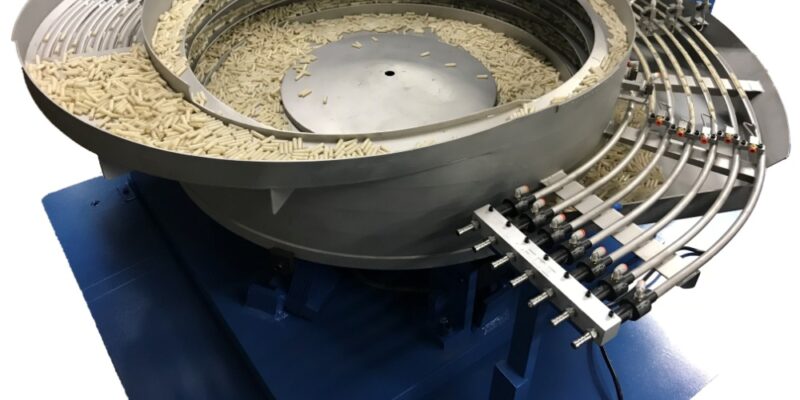The history of vibratory feeder bowls can be traced back to the early 20th century when the first vibratory feeder was invented by a Swedish engineer named Erik Erikson. Erikson’s design consisted of a metal trough that was mounted on springs and vibrated by an eccentric motor. This device was primarily used to transport and feed coal and other materials in the mining industry.
In the 1950s and 1960s, vibratory feeder bowls began to be used in the manufacturing industry to feed and orient small parts. The first commercial vibratory feeder bowl was developed in the US around the 1950s. The original bowl feeder was designed to feed and orient small metal parts for the automotive industry.
Over the years, vibratory feeder bowl technology has continued to evolve and improve. In the 1970s and 1980s, electronic controls were added to vibratory feeder bowls, which allowed for greater control over the feeding process. Today, vibratory feeder bowls are used in a wide range of industries, including electronics, pharmaceuticals, food and beverage, and automotive.
In addition to their use in manufacturing and automation, vibratory feeder bowls have also been used in research and development settings to study the behavior of small particles and materials. Vibratory feeder bowls have proven to be a versatile and reliable tool for feeding and orienting small parts and have become an essential component in many manufacturing and automation processes.
Why are they called “bowl feeders”?
Bowl Feeders are mechanical devices used in manufacturing and automation processes to feed and orient parts or components for further assembly or processing. These devices use vibrations to move parts along a specially designed bowl that has tracks or grooves in it, which helps to orient the parts and guide them towards a discharge point.
The vibratory feeder bowl consists of a base and a bowl that is attached to the base using springs or other damping mechanisms. The bowl is designed to vibrate at a specific frequency, which is generated by an electromagnetic coil or a motor that is mounted on the base. When the motor or coil is activated, it generates a series of rapid vibrations that cause the parts in the bowl to move along the tracks or grooves towards the discharge point.
Vibratory feeder bowls are widely used in various industries, such as automotive, electronics, pharmaceuticals, and food and beverage, to feed and orient small parts, such as screws, bolts, nuts, washers, electronic components, and food items like candy, nuts, and seeds. These devices offer several advantages over traditional feeding methods, such as manual feeding or conveyor belts, including higher speed, greater accuracy, and reduced labor costs.
Overall, vibratory feeder bowls are an essential component in modern manufacturing and automation processes, as they help to improve efficiency, reduce errors, and increase productivity.

